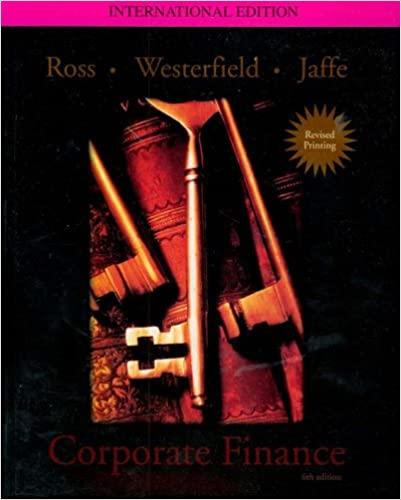Grinders Inc, operates a chain of doughnut shops. The company is considering two possible expansion plans. Plan A would open eight smaller shops at a cost of $8,940,000. Expected annual net cash inflows are $1,750,000 with zero residual value at the end of ten years. Under Plan B, Grinders would open three larger shops at a cost of $8,240,000. This plan is expected to generate net cash inflows of $1,250,000 per year for ten years, the estimated life of the properties. Estimated residual value is $1,025,000. Grinders uses straight-line depreciation and requires an annual return of 6% (Click the icon to view the present value annuity factor table) (Click the icon to view the present value factor table.) (Click the icon to view the future value annuity factor table.) (Click the icon to view the future value factor table.) Read the requirements Requirement 1. Compute the payback period, the ARR, and the NPV of these two plans. What are the strengths and weaknesses of these capital budgeting models? Begin by computing the payback period for both plans. (Round your answers to one decimal place.) Plan A (in years) Plan B (in years) Reference Reference Reference \begin{tabular}{|c|c|c|c|c|c|c|c|c|c|c|c|c|c|} \hline & & & & & & Future V & alue of $1 & & & & & & \\ \hline Periods & 1% & 2% & 3% & 4% & 5% & 6% & 8% & 10% & 12% & 14% & 16% & 18% & 20% \\ \hline Period 1 & 1.010 & 1.020 & 1030 & 1.040 & 1.050 & 1.060 & 1.080 & 1.100 & 1.120 & 1.140 & 1.160 & . 180 & 1.200 \\ \hline Period 2 & 1.020 & 1.040 & 1.061 & 1.082 & 1.103 & 1.124 & 1.166 & 1.210 & 1.254 & 1.300 & 1.346 & 1.392 & 1.440 \\ \hline Period 3 & 1.030 & 1.061 & 1.093 & 1.1.125 & 1.158 & & 1.2 & 1.331 & 1.405 & 1.482 & 1.561 & 1.643 & 1728 \\ \hline Period 4 & 1.041 & 1.082 & 1.126 & 1.170 & 1.216 & 2 & 1. & 1.464 & 1.574 & 1.689 & 1.811 & 1.939 & 2.074 \\ \hline Period 5 & 1.051 & 1.104 & 1.159 & 1.217 & 1. 276 & 1.338 & 1.469 & 1.611 & 1.762 & 1.925 & 2.100 & 2.288 & 2.488 \\ \hline Period 6 & 1.062 & 1.126 & 1.194 & 1.265 & 1.340 & 1.41 & 1.587 & 1.772 & 1.974 & 2.195 & 2436 & 2.700 & 2.986 \\ \hline Period 7 & 1.072 & 1.149 & 1.230 & 1.316 & 1.407 & 1. & 1.7 & 1.949 & 2211 & 2.502 & 2826 & 3.185 & 3.583 \\ \hline Period 8 & 1.083 & 1.172 & 1.267 & 1.369 & 1.477 & 1.5 & 1.85 & 2.144 & 2.476 & 2.853 & 3.278 & 3.759 & 4.300 \\ \hline Period 9 & 1.094 & 1.195 & 1.305 & 1.423 & 1.551 & 1.689 & 1.99 & 2.358 & 2.773 & 3.252 & 3.803 & 4.435 & 5.160 \\ \hline Period 10 & 1.105 & 1. 219 & 1. 344 & 1.480 & 1.629 & 1.791 & 2.159 & 2.594 & 3.106 & 3.707 & 4.411 & 5.234 & 6.192 \\ \hline d 11 & 1.116 & 1.243 & 1.384 & 1.539 & 1.710 & 1.898 & 2.332 & 2.853 & 3.479 & 4226 & 5.117 & 6.176 & 7.430 \\ \hline riod 12 & 1.127 & 1268 & 1.426 & 1601 & 1.796 & 12 & 2.518 & 3.138 & 3.896 & 4.818 & 5.936 & 7.288 & 8916 \\ \hline Period 13 & 1.138 & 1.294 & 1.469 & 1.665 & 1886 & 2.133 & 2720 & 3.452 & 4.363 & 5.492 & 6.886 & 8.599 & 10.699 \\ \hline Period 14 & 1.149 & 1.319 & 1.513 & 1.732 & 1.980 & 2.261 & 2.937 & 3.797 & 4.887 & 6.261 & 7.988 & 10.147 & 12839 \\ \hline Period 15 & 1.161 & 1.346 & 1.558 & 1.801 & 2079 & 2397 & 3.172 & 4.177 & 5.474 & 7.138 & 9.266 & 11.974 & 15.407 \\ \hline & 1.22 & 1.486 & 1.8 & 2.19 & 2.653 & & 4.6 & 6.727 & 9.646 & 13.743 & 19.461 & 27.393 & 38.338 \\ \hline Period 25 & 1282 & 1. 641 & 2094 & 2.666 & 3.386 & 4292 & 6.848 & 10.835 & 17.000 & 26.462 & 40.874 & 62.669 & 95.396 \\ \hline Period 30 & 1.348 & 1.811 & 2427 & 3.243 & 4.322 & 5.743 & 10.063 & 17.449 & 29.960 & 50.950 & 85.850 & 143.371 & 237.376 \\ \hline Period 40 & 1.489 & 2.208 & 3.262 & 4.801 & 7.040 & 10.286 & 21.725 & 45.259 & 93.051 & 188.884 & 378.721 & 750.378 & 1,469.772 \\ \hline \end{tabular} Requirements 1. Compute the payback period, the ARR, and the NPV of these two plans. What are the strengths and weaknesses of these capital budgeting models? 2. Which expansion plan should Grinders choose? Why? 3. Estimate Plan A's IRR. How does the IRR compare with the company's required rate of return












